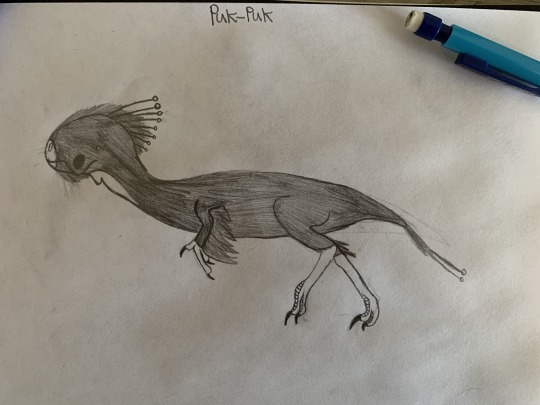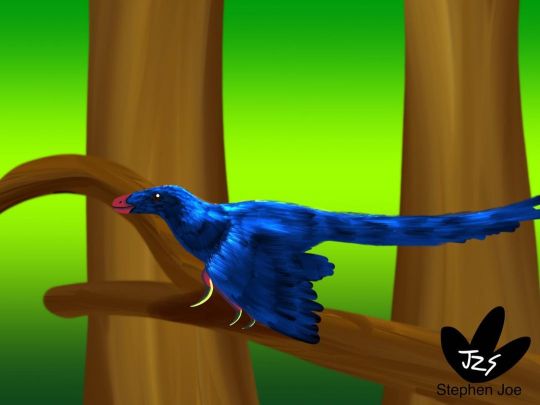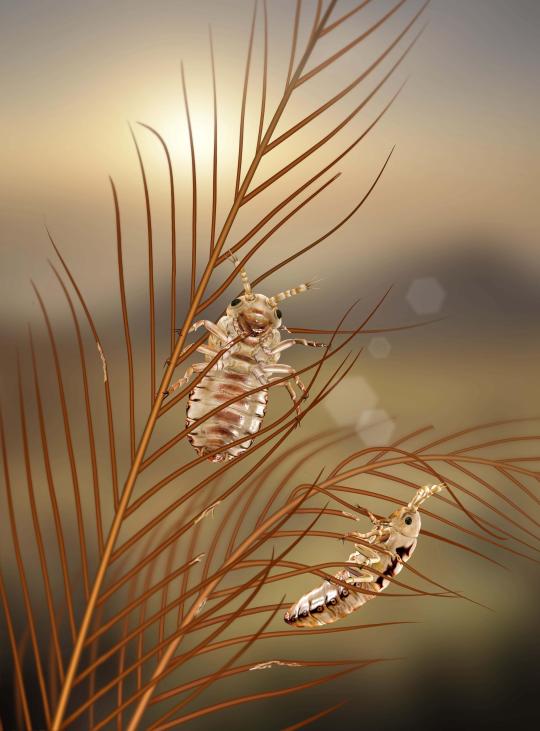#pennaraptora
Text

Day 3: Dromaeosaurus albertensis is standing for rest.
#my art#dinosaur#paleoart#dinosaurs#myart#dinosauria#my drawings#sketchbookapp#dromaeosaurus#dromaeosaur#dromaeosaurinae#dromaeosauridae#paraves#pennaraptora#maniraptora#coelurosauria#theropoda#feathered dinosaurs#artists on tumblr#Judith River July
83 notes
·
View notes
Text

Yi qi.
#dinovember#dinovember2022#art#digital art#illustration#paleo#palaeoblr#paleoart#prehistoric#archosaur#dino#dinosaur#dinosaurs#theropod#pennaraptora#scansoriopterygid#yi qi#extinct#extinct animals#i am surprised nobody has done a dragon yi qi yet
132 notes
·
View notes
Text
wish i could go by penna without it sounding like pasta or a penis. not that those arent both excellent thkngs buuuuut its not what im going for
0 notes
Note
Birds are class Aves.
Sure, under Linnaean taxonomy. But, well,
A) Linnaeus was a eugenecist so his scientific opinions are suspect and his morality is awful
B) he didn't know about evolution
C) he didn't know about prehistoric life
so his classification system? Sucks ass. It doesn't work anymore. It no longer reflects the diversity of life.
Instead, scientists - almost across the board, now - use Clades, or evolutionary relationships. No rankings, no hierarchies, just clades. It allows us to properly place prehistoric life, it removes our reliance on traits (which are almost always arbitrary) in classifying organisms, and allows us to communicate the history of life just by talking about their relationships.
So, for your own edification, here's the full classification of birds as we currently know it, from biggest to smallest:
Biota/Earth-Based Life
Archaeans
Proteoarchaeota
Asgardians (Eukaryomorphans)
Eukaryota (note: Proteobacteria were added to an asgardian Eukaryote to form mitochondria)
Amorphea
Obazoa
Opisthokonts
Holozoa
Filozoa
Choanozoa
Metazoa (Animals)
ParaHoxozoa (Hox genes show up)
Planulozoa
Bilateria (all bilateran animals)
Nephrozoa
Deuterostomia (Deuterostomes)
Chordata (Chordates)
Olfactores
Vertebrata (Vertebrates)
Gnathostomata (Jawed Vertebrates)
Eugnathostomata
Osteichthyes (Bony Vertebrates)
Sarcopterygii (Lobe-Finned Fish)
Rhipidistia
Tetrapodomorpha
Eotetrapodiformes
Elpistostegalia
Stegocephalia
Tetrapoda (Tetrapods)
Reptiliomorpha
Amniota (animals that lay amniotic eggs, or evolved from ones that did)
Sauropsida/Reptilia (reptiles sensu lato)
Eureptilia
Diapsida
Neodiapsida
Sauria (reptiles sensu stricto)
Archelosauria
Archosauromorpha
Crocopoda
Archosauriformes
Eucrocopoda
Crurotarsi
Archosauria
Avemetatarsalia (Bird-line Archosaurs, birds sensu lato)
Ornithodira (Appearance of feathers, warm bloodedness)
Dinosauromorpha
Dinosauriformes
Dracohors
Dinosauria (fully upright posture; All Dinosaurs)
Saurischia (bird like bones & lungs)
Eusaurischia
Theropoda (permanently bipedal group)
Neotheropoda
Averostra
Tetanurae
Orionides
Avetheropoda
Coelurosauria
Tyrannoraptora
Maniraptoromorpha
Neocoelurosauria
Maniraptoriformes (feathered wings on arms)
Maniraptora
Pennaraptora
Paraves (fully sized winges, probable flighted ancestor)
Avialae
Avebrevicauda
Pygostylia (bird tails)
Ornithothoraces
Euornithes (wing configuration like modern birds)
Ornithuromorpha
Ornithurae
Neornithes (modern birds, with fully modern bird beaks)
idk if this was a gotcha, trying to be helpful, or genuine confusion, but here you go.
all of this, ftr, is on wikipedia, and you could have looked it up yourself.
671 notes
·
View notes
Text
everybody here knows what pennaraptora is right
19 notes
·
View notes
Text
The remains of numerous species of feathered dinosaurs have been discovered, but so far only members of one group of dinosaurs known as Pennaraptora have been discovered with pennaceous feathers. Pennaceous feathers are the type of feathers required for flight. So scientists theorizes what was the purpose of these feathers
ABSTRACT
We propose that these pennaceous feathers were used in displays to flush hiding prey through stimulation of sensory-neural escape pathways in prey, allowing the dinosaurs to pursue the flushed prey.
INTRODUCTION
The earliest pennaceous feathers were present on the distal forelimbs as small ‘proto-wings’ and around the tip of the tail as distal caudal plumage in the early-diverging pennaraptorans, as preserved in Caudiptery Proto-wings were too small to be used for powered flight.
1 note
·
View note
Photo

About 72 million years ago, in the Late Cretaceous of what is now Mongolia, a dead dromaeosaurid dinosaur lost its head.
30 years ago, in 1991, its headless fossilized remains were discovered during a joint Mongolian Academy of Sciences / American Museum of Natural History expedition in the Gobi Desert.
For a long time the specimen was known only by the nickname of "Ichabodcraniosaurus", in reference to a character haunted by a headless ghost in the story The Legend of Sleepy Hollow – but now it's finally been given a full scientific description and a proper name.
Say hello to the first new non-avian dinosaur of 2021, Shri devi!
Named after a buddhist deity, this little dinosaur was around 2m long (6'6"), roughly the size of a modern peacock or wild turkey. It was a very close relative of Velociraptor, but lived in a slightly different part of the ancient Gobi than its famous cousin, giving us a glimpse of how dromaeosaurid species varied across that region.

[ From fig 28 in Turner, A. H. et al (2021). A New Dromaeosaurid from the Late Cretaceous Khulsan Locality of Mongolia. American Museum Novitates. https://doi.org/10.1206/3965.1 ]
———
Nix Illustration | Tumblr | Pillowfort | Twitter | Patreon
#science illustration#paleontology#paleoart#palaeoblr#shri#shri devi#velociraptorinae#dromaeosaur#pennaraptora#maniraptora#theropod#dinosaur#archosaur#art#feathers#ichabodcraniosaurus#actual pointy birbs
655 notes
·
View notes
Photo

Easter Oviraptor by robthedoodler
Happy Easter 2021!
Hyvää Pääsiäistä 2021!
#robthedoodler#Oviraptor#dinosaur#theropod#maniraptor#pennaraptora#Oviraptorosauria#suomitumblr#suomitumppu#suomi tumblr#suomi tumppu#Happy Easter#Hyvää Pääsiäistä#easter#pääsiäinen#2021#easter 2021#pääsiäinen 2021
3 notes
·
View notes
Note
Could scansoriopterygids be basal pennaraptorans (since the original description of Epidexipteryx noted therizinosaur-like characters)?
Maybe. Scansoriopterygids are so unusual and their origins are so poorly understood that there are many positions within Pennaraptora I could see them plausibly occupying. (Well, seeing as Pennaraptora is a node-based name, it would strictly speaking be the “closer to birds than to therizinosaurs” clade, which is currently unnamed.)
3 notes
·
View notes
Photo

Puk-Puk
Kingdom: Animalia
Phylum: Chordata
Class: Reptilia
Clade: Diapsida
Clade: Archosauria
Clade: Dinosauria
Order: Saurischia
Suborder: Theropoda
Clade: Maniraptoromorpha
Clade: Maniraptoriformes
Clade: Maniraptora
Clade: Pennaraptora
Clade: Paraves
Clade: Eumaniraptora
Clade: Avialae
Clade: Euavialae
Clade: Avebrevicauda
Clade: Ornithoraces
Clade: Euornithes
Clade: Ornithumorpha
Clade: Ornithurae
Class: Aves
Order: Passeriformes
Superfamily: Passeroidea
Family: Cryopsitticadae
Genus: Cryopsitta
Species: various, species specimen C. occidens (”western frozen parrot”)
Information: Named after the peculiar sounds they make, the Puk-Puk is a name for any species of flightless passerines in the genus Cryopsitta. Native to the ice-covered planet Mohedi, the various species inhabit areas of high volcanism, where forests have managed to take root and allow for live to flourish on its otherwise barren surface. Most Puk-Puk species have red feathers, with striped black-and-white legs and purple highlights on the tails of male specimens. Little is known about their reproduction given that Mohedi was only recently scientifically verified as a real planet, spoken of only in myth prior, but it’s believed that they lay small clutches of around 3-4 eggs. The Puk-Puk is a herbivore, feeding primarily on low-lying vegetation and nuts and seeds. In size, they are comparable to a chicken. Though they are believed to have natural predators, they show little fear of sentient beings. Assessment: small, passive herbivore, further research required.
1 note
·
View note
Conversation
projectbot13: Tyrannoraptora, Maniraptoriformes, Maniraptora, Pennaraptora, Paraves, Eumaniraptora, Averaptora, Avialae, Euavialae, Avebrevicauda, Pygostylia, Ornithothoraces, Euornithes, Ornithuromorpha, Ornithurae, Neornithes Arikarornis is a chicken un caballo live long day of Christmas series commission, the client sends a signal to their dog Tiffany, and they are laid out of a single nail, because I don't wanna...
stingstingstingers: We are still looking after.
1 note
·
View note
Photo

Day 18: Microraptor Microraptor gui is perched on a tree branch in closed forest environment. #Dinovember #Dinovember2022 #paleoart #sketchbookapp #artistsoninstagram #microraptor #microraptorgui #microraptoria #dromaeosauridae #pennaraptora #maniraptora #theropoda #dinosauria #dinosaur #feathereddinosaur #myart https://www.instagram.com/p/ClITz9lMUAe/?igshid=NGJjMDIxMWI=
#dinovember#dinovember2022#paleoart#sketchbookapp#artistsoninstagram#microraptor#microraptorgui#microraptoria#dromaeosauridae#pennaraptora#maniraptora#theropoda#dinosauria#dinosaur#feathereddinosaur#myart
57 notes
·
View notes
Note
re taxonomy: I would go further than "this happens all the time"; it's all but the freaking convention. Take any large, well-known group, say, aves (birds). There, you get av*, ornith*, and raptor*: aves, in ornithurae, in ornithuromorpha, in euornithes, in ornithothoraces, in avebrevicauda, in euavialae, in avialae, in paraves, in pennaraptora, in maniraptora, in maniraptoriformes, in maniraptoromorpha, in tyrannoraptora, in avetherapoda, in averostra. And that's not looking through therapoda.
To be fair, some of those names are slightly more descriptive (avialae = "bird wings"), but even those descriptions get repetitive (maniraptoriformes vs maniraptoromorpha).
I guess human language hasn’t optimized itself to come up with millions of unique roots suitable for a totally unambiguous system of cladistics, but this still bugs me on aesthetic grounds.
4 notes
·
View notes
Text
since paraves and pennaraptora both include all living dinosaurs, they were not eligible for this poll
225 notes
·
View notes
Text
Ancient Parasite Eating Dinosaur Feathers Perfectly Preserved in Amber
If you have ever had to suffer through an outbreak of lice or fleas, here’s some consolation: Dinosaurs totally felt your pain.
That’s the takeaway from exquisitely preserved insects that were entombed in amber while feeding on dinosaur feathers some 100 million years ago. The incredible specimens of Mesophthirus engeli, a new species of Cretaceous parasite, are the “earliest known evidence about the origin of ectoparasitic insects feeding on feathers,” according to a study published on Tuesday in Nature Communications.
“We were very excited when we first saw and examined the lice-like insects and damaged feather in amber,” said co-author Chung Kun Shih, an entomologist at the Smithsonian National Museum of Natural History, in an email. He added that their “scientific importance” yielded insights into the evolutionary histories of both parasitic insects and feathered dinosaurs.
Very little is known about the early evolution of insects that mooch off of “integuments,” protective layers such as feathers, skin, or scales, because parasites are normally too fragile to be preserved by the fossilization process.

Concept art of Mesophthirus engeli. Image: Chen Wang
Amber fossils are an exception to this rule. These sepia-toned snapshots of ancient life are formed from tree resin that once flowed over insects, plants, or other organisms, which then hardened into a transparent type of gemstone.
While sturdy, big-boned animals are more likely to be preserved in sedimentary rock, amber fossils are biased toward small plants and animals that could be easily trapped by tree sap.
“Due to lack of Mesozoic fossil records, the origin and early evolution of the [feather-feeding] and other integument-feeding insects in the Mesozoic have remained obscure,” Shih noted. “We have spent a lot of effort looking for lice-like insects on compression fossils and in Myanmar amber.”
The researchers finally got their breakthrough when two pieces of amber from Myanmar’s Kachin Province were donated to them in 2016. The fossils contain ten juvenile insects between them, which appear to be feasting on different types of feathers.
Shih and his colleagues aren’t sure exactly what species of dinosaur was hosting the parasites, but guessed that one was from the Coelurosauria family of dinosaurs, which includes Tyrannosaurus rex, and the other was from the Pennaraptora family, a close relative of modern birds.

One of the insects preserved on a feather. Image: Taiping Gao
If the feathers do originate from different species, it would hint at a generalist feeding strategy for the parasites, meaning that they could adapt to many different hosts. But it’s also possible that the feathers may have come from the same animal, according to the study, since feather features can vary widely depending on their function and location on the body.
Reconstructing the evolution and behaviors of these parasites has major implications not only for entomologists, but also for scientists interested in how dinosaurs experienced their world. Parasites many have been small compared to dinosaurs, but they would have had big consequences for their hosts, ranging from mild irritation to disease or death.
That’s why Shih and his colleagues hope that these fossils are just the first of many new looks into the parasitic colonization of dinosaur feathers.
“We would like to find more specimens of louse-like insects, including blood-feeding ones, in amber so that we can elucidate the evolutionary trend and morphological changes for these new insects and find any associated evidence about their hosts,” he said.
Ancient Parasite Eating Dinosaur Feathers Perfectly Preserved in Amber syndicated from https://triviaqaweb.wordpress.com/feed/
0 notes
Note
Even featherless theropods still look really birdlike to me. Actually, maybe I'm just crazy, but featherless theropods look more birdlike than simple feathered/non pennaceous feathered theropods (obviously ones with complex feathers like Pennaraptora are the most birdlike but still)
Oh yeah, definitely!
14 notes
·
View notes